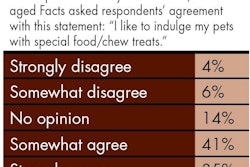Feline obesity generally results in aberrations to plasma metabolite levels, such as lipid concentrations and lipoprotein composition. This study sought to investigate the effect of obesity on cholesterol lipoprotein composition and circulating adiponectin concentrations. Plasma glucose, lipids (triglyceride, cholesterol and free fatty acid), insulin and adiponectin concentrations and cholesterol lipoprotein composition were measured and compared between body condition score (BCS)-determined normal healthy control and obese cats.
Although the obese group demonstrated higher levels of plasma cholesterol, glucose and triglycerides compared to healthy controls, the difference was insignificant, thus indicating the BCS-determined obese cats may have been overweight and not morbidly obese. Plasma insulin levels were significantly higher (25–30%) versus healthy control animals, possibly hinting at the ensuing emergence of obesity-induced insulin resistance. However, the BCS-determined obese cats demonstrated a significant reduction in plasma adiponectin concentration and a significant increase in LDL-cholesterol percentage compared to age matched healthy control animals.
This would indicate changes in plasma adiponectin concentration and cholesterol lipoprotein composition may be good early indicators of obesity in cats.
Source : S. Muranaka et al., 2011. Obesity induced changes to plasma adiponectin concentration and cholesterol lipoprotein composition profile in cats. Res Vet Sci 91: 358-361. doi: 10.1016/j.rvsc.2010.09.012
















